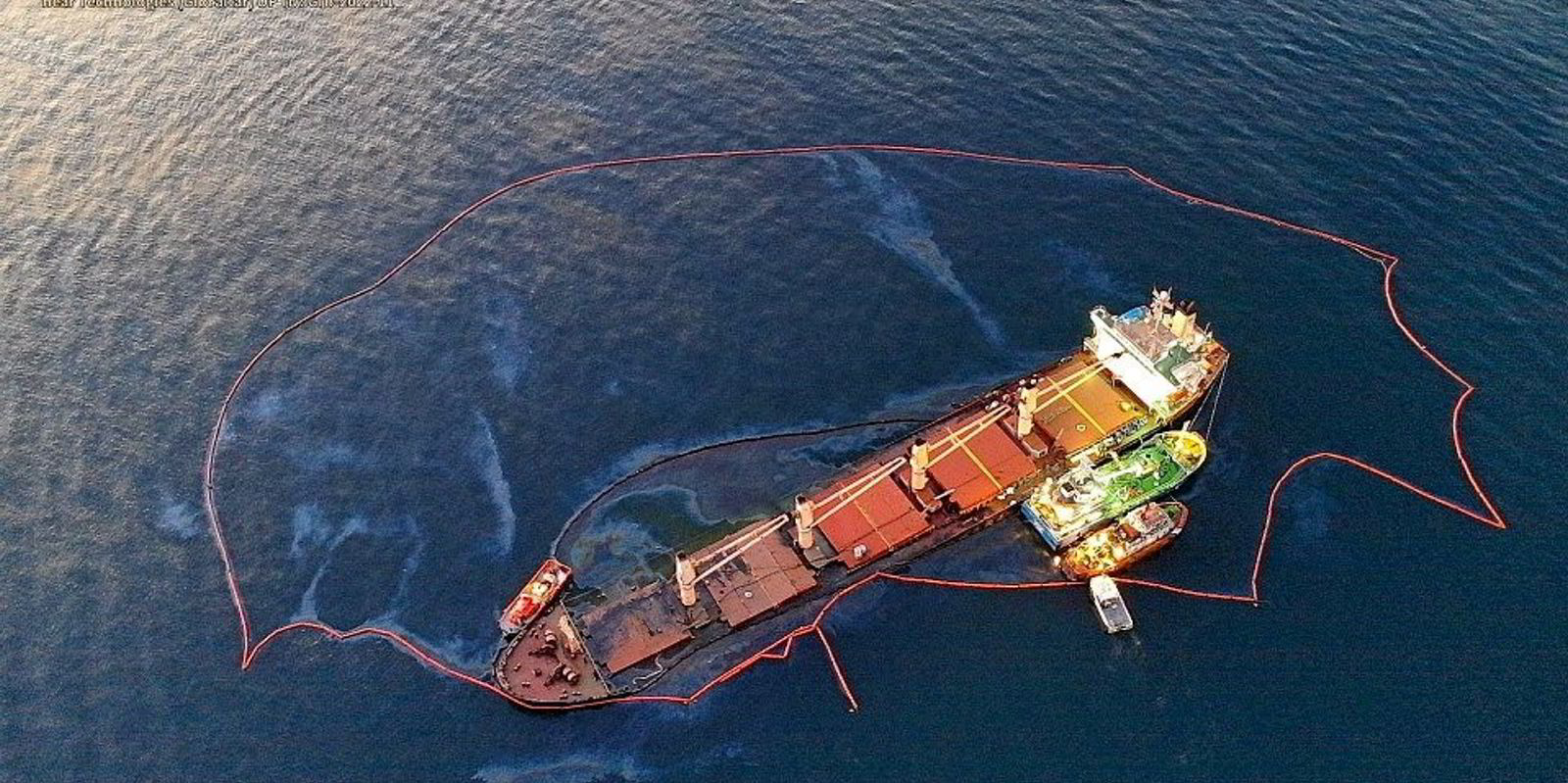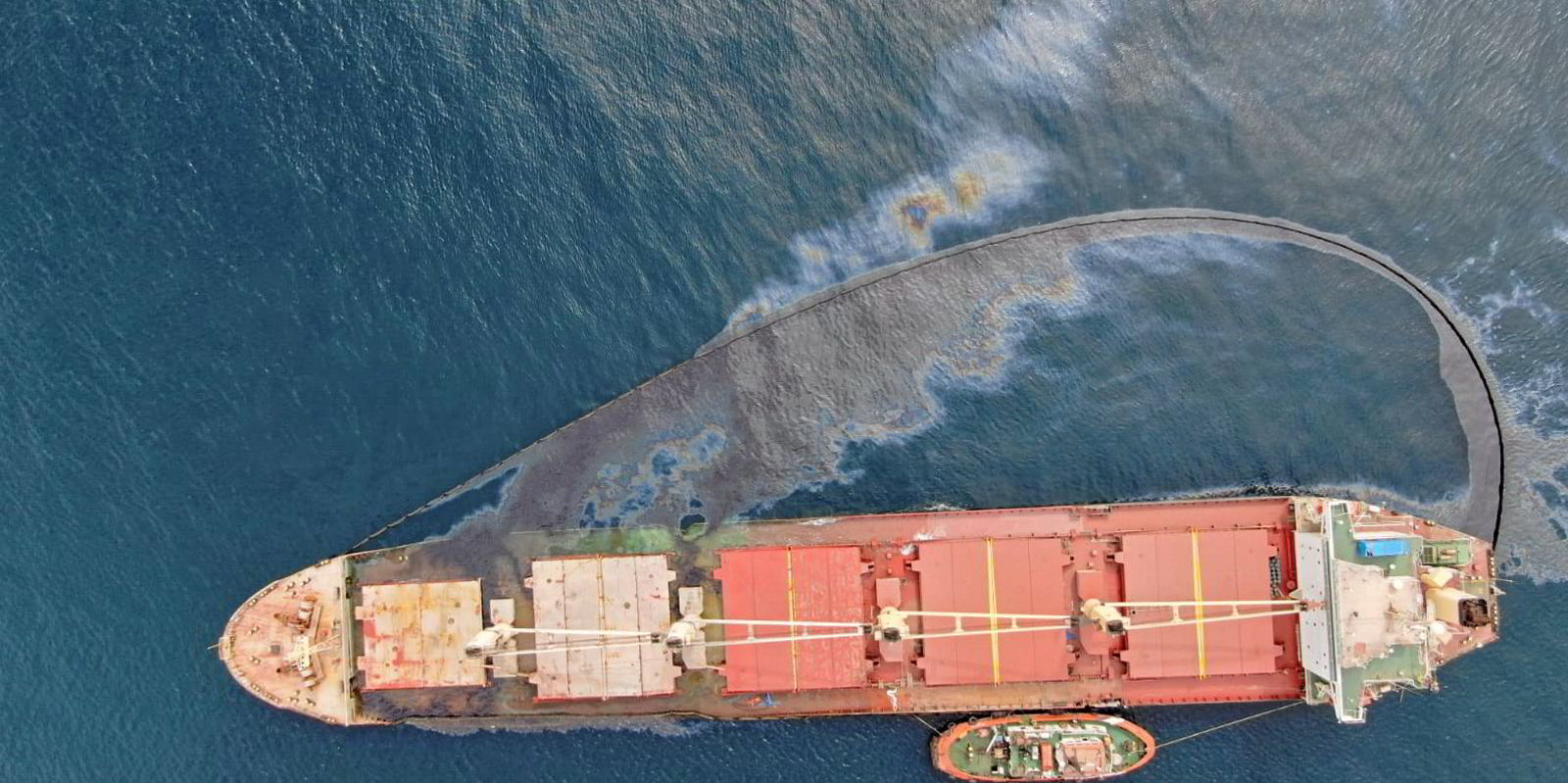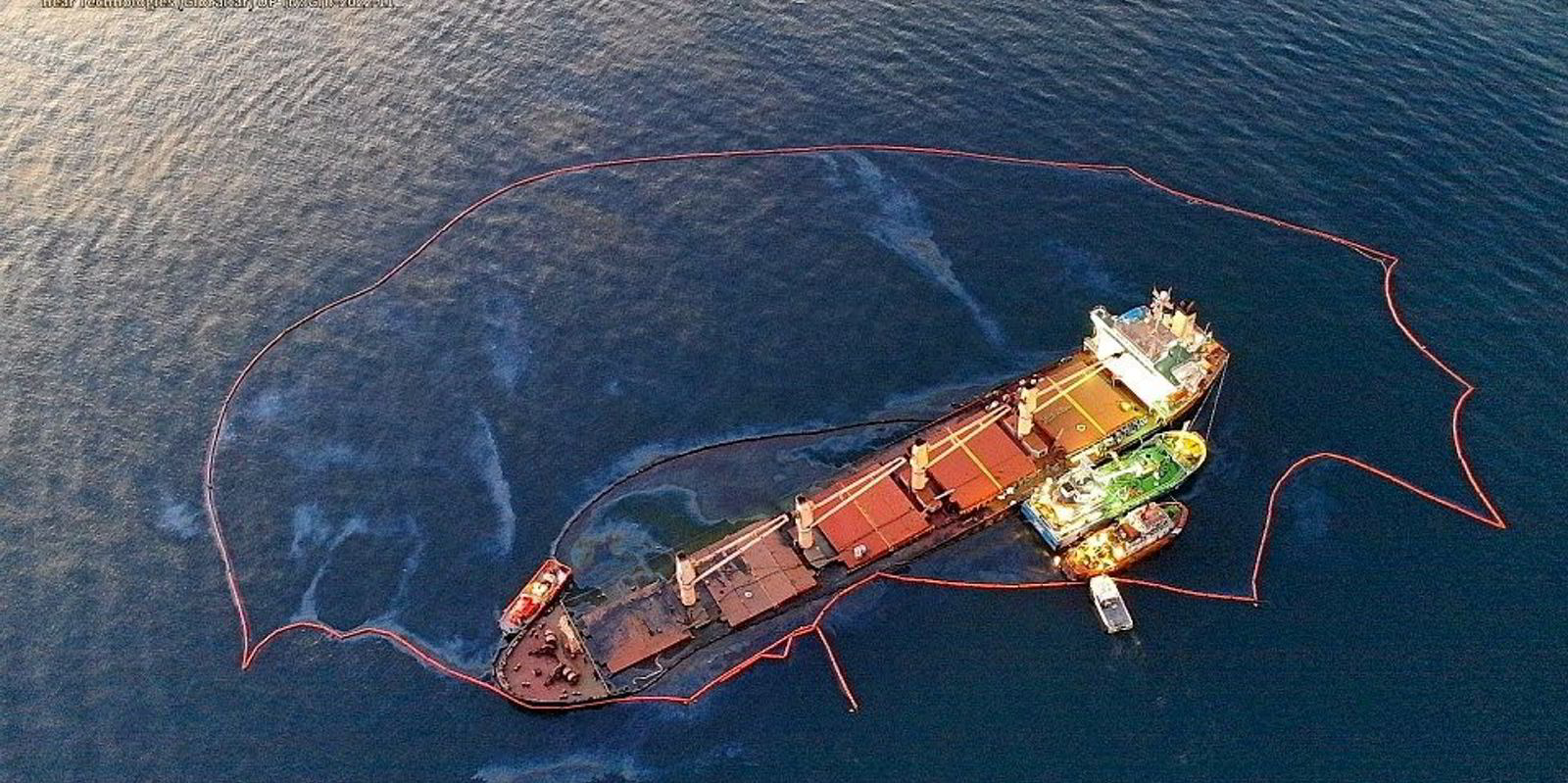Gibraltar is set to finalise a contract for the wreck removal of a bulk carrier that grounded off its coast and broke its back in August this year.
TradeWinds understands Dutch firm Koole Contractors is the preferred bidder at this stage to dismantle and dispose of the wreck of the 35,362-dwt OS 35 (built 1999). A final decision is expected to be made shortly.
The wreck removal contract will have to be concluded quickly if insurers are to meet the end of June deadline set by the Gibraltar government. The job is estimated to take about six months.
The ship was entered with fixed premium insurance provider British Marine, which is backed by the giant QBE insurance group.
Koole is a heavy lift specialist that entered into the marine salvage sector after acquiring compatriot Mammout Salvage’s business in 2016.
The selection of a heavy lift specialist suggests that salvors believe the wreck can be removed in fairly large sections.
A major consideration in the tender process has been where the wreck will be recycled.
The ship was registered in Tuvalu but as it is grounded in European waters under international law it will be viewed as European hazardous waste.
Either the Basel Convention on the export of hazardous waste, or the European Union Ship Recycling Regulation (SRR) could apply.
TradeWinds understands there has been a discussion on disposing of the wreck in Morocco, which is the largest importer of EU waste and is seeking to develop its shipbreaking industry.
It is unclear if this is in line with ship recycling regulations, as there are no Moroccan shipyards currently on the EU list of approved shipbreakers.
Koole is also a partner in DecomMissionBlue, an initiative of Amsterdam Ijmuiden Offshore Ports, in which large companies join forces to find innovative and sustainable ways to decommission offshore and large maritime objects.
The OS 35 was deliberately grounded off Gibraltar after it had become involved in a collision with the 165,000-cbm gas carrier Adam LNG (built 2014) which was at anchor.
Attempts to refloat the vessel were suspended after it broke its back.
Most of the bunker fuel and pollutants were recovered from the vessel although a small amount escaped and polluted the local coastline.





